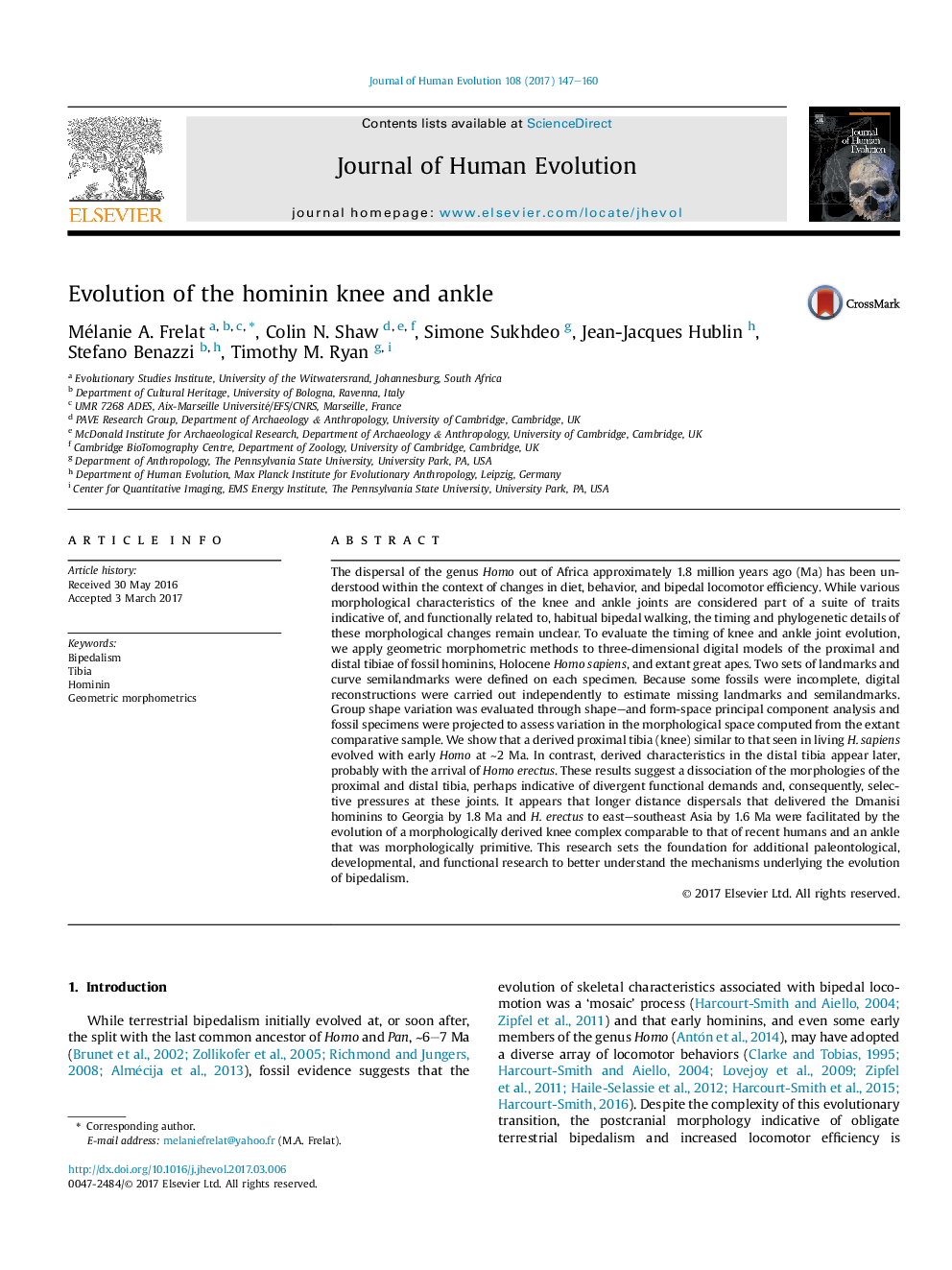| کد مقاله | کد نشریه | سال انتشار | مقاله انگلیسی | نسخه تمام متن |
|---|---|---|---|---|
| 5766831 | 1628141 | 2017 | 14 صفحه PDF | دانلود رایگان |
عنوان انگلیسی مقاله ISI
Evolution of the hominin knee and ankle
ترجمه فارسی عنوان
تکامل زانو و مچ پا همینیین
دانلود مقاله + سفارش ترجمه
دانلود مقاله ISI انگلیسی
رایگان برای ایرانیان
کلمات کلیدی
دوبعدی، تیبیا، هومنین، مورفومترهای هندسی
موضوعات مرتبط
علوم زیستی و بیوفناوری
علوم کشاورزی و بیولوژیک
بوم شناسی، تکامل، رفتار و سامانه شناسی
چکیده انگلیسی
The dispersal of the genus Homo out of Africa approximately 1.8 million years ago (Ma) has been understood within the context of changes in diet, behavior, and bipedal locomotor efficiency. While various morphological characteristics of the knee and ankle joints are considered part of a suite of traits indicative of, and functionally related to, habitual bipedal walking, the timing and phylogenetic details of these morphological changes remain unclear. To evaluate the timing of knee and ankle joint evolution, we apply geometric morphometric methods to three-dimensional digital models of the proximal and distal tibiae of fossil hominins, Holocene Homo sapiens, and extant great apes. Two sets of landmarks and curve semilandmarks were defined on each specimen. Because some fossils were incomplete, digital reconstructions were carried out independently to estimate missing landmarks and semilandmarks. Group shape variation was evaluated through shape-and form-space principal component analysis and fossil specimens were projected to assess variation in the morphological space computed from the extant comparative sample. We show that a derived proximal tibia (knee) similar to that seen in living H. sapiens evolved with early Homo at â¼2 Ma. In contrast, derived characteristics in the distal tibia appear later, probably with the arrival of Homo erectus. These results suggest a dissociation of the morphologies of the proximal and distal tibia, perhaps indicative of divergent functional demands and, consequently, selective pressures at these joints. It appears that longer distance dispersals that delivered the Dmanisi hominins to Georgia by 1.8 Ma and H. erectus to east-southeast Asia by 1.6 Ma were facilitated by the evolution of a morphologically derived knee complex comparable to that of recent humans and an ankle that was morphologically primitive. This research sets the foundation for additional paleontological, developmental, and functional research to better understand the mechanisms underlying the evolution of bipedalism.
ناشر
Database: Elsevier - ScienceDirect (ساینس دایرکت)
Journal: Journal of Human Evolution - Volume 108, July 2017, Pages 147-160
Journal: Journal of Human Evolution - Volume 108, July 2017, Pages 147-160
نویسندگان
Mélanie A. Frelat, Colin N. Shaw, Simone Sukhdeo, Jean-Jacques Hublin, Stefano Benazzi, Timothy M. Ryan,
